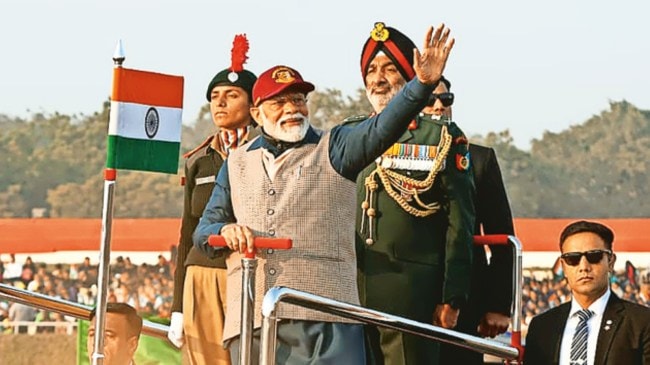Opinion Operation Sindoor has rewritten the rules of engagement in the Indian subcontinent
This was not a war for territory. It was a war for credibility. And India won — militarily, diplomatically, and psychologically. The burden now shifts to Islamabad
 This was not a war for territory. It was a war for credibility. And India won — militarily, diplomatically, and psychologically
This was not a war for territory. It was a war for credibility. And India won — militarily, diplomatically, and psychologically On May 7, India launched Operation Sindoor, a calibrated but far-reaching military response after suffering yet another terrorist attack from Pakistan-linked terrorists in Pahalgam. The operation saw precision strikes on key terrorist infrastructure across Pakistan: Targets in Bahawalpur, Muridke, and Muzaffarabad, the places that seemed to have a long association with groups like the Lashkar-e-Taiba and the Jaish-e-Mohammed. But what followed over the next few days would alter the Indian subcontinent’s strategic architecture.
On the night of May 10, India launched a consequential strike deep inside Pakistan. Among the high-value targets were air bases, air defence systems, radars, air assets, and other military targets. Operation Sindoor has rewritten the rules of engagement in the Indian subcontinent.
This was not a war in the traditional sense. It was neither a large-scale invasion nor a decapitating strike to degrade Pakistan’s military’s ability to fight. It was, rather, a bold demonstration of capability and intent.
For decades, Pakistan’s nuclear arsenal seemed to serve as a shield. It deterred conventional Indian responses while enabling Islamabad to wage a relentless proxy war through terror. Each major terror attack — from the Parliament in 2001 to Mumbai in 2008 and Pulwama in 2019 — was met with calibrated restraint.
Prime Minister Narendra Modi’s government has made it clear: India will no longer be held hostage by Pakistan’s nuclear blackmail. If terrorism is used as an instrument of state policy, retaliation will not be limited to makeshift terror camps — it will extend across the spectrum of Pakistan’s power structure, including military and strategic assets. It is now the operational doctrine.
Operation Sindoor had three clear objectives: Military, political, and psychological. In the words of Prime Minister Modi, the aim was to “reduce terrorists to dust”. India claims over 100 terrorists were killed.
Politically, India suspended the Indus Waters Treaty, with renegotiations contingent on Pakistan’s behaviour, signalling that water will now be used alongside military tools. The message was that state-sponsored terror will have consequences beyond the battlefield.
Psychologically, India pierced the illusion of invulnerability that Rawalpindi’s generals had come to rely on. The doctrine of “strategic invincibility” no longer applies.
Some have criticised India’s rules of engagement on Day 1 of the conflict, arguing that it could have neutralised Pakistan’s air defences and struck military targets more comprehensively, owing to potential losses to the Indian Air Force. But that was never the objective.
Like the early days of the Kargil War, Operation Sindoor began with strict political directives — strike terror targets without crossing a threshold that could be interpreted as a full-scale war. India could have gone for air superiority first, but that would have signalled total war — something the government clearly wanted to avoid on May 7. The goal was to operate strategically within the nuclear threshold, but not under its blackmail.
Pakistan, in contrast, escalated. The strikes on Indian cities, civilians, and military installations were its own choice. India’s response on May 8, May 9, and most decisively on May 10, was not a pre-planned offensive — it was retaliation. And as those events unfolded, it became clear that India had anticipated this escalation and was prepared to respond not just to terrorists, but to the Pakistani military itself.
This is why I believe India won decisively. Not just with the display of military superiority, but in ideas challenged and doctrines redrawn. In the earlier scheme of things, Pakistan could sponsor terror without fear of retaliation. But now there is no place for such presumptions.
Operation Sindoor will be studied as a case of the calibrated use of force between nuclear-armed states. It shows that limited, targeted military action is possible even under the nuclear shadow — provided it is anchored in clarity of intent, political will, and strategic preparation. What Indian military leaders have said over the years has been validated.
This was not a war for territory. It was a war for credibility. And India won — militarily, diplomatically, and psychologically. The burden now shifts to Islamabad.
The author is an adjunct scholar at the Takshashila Institution






